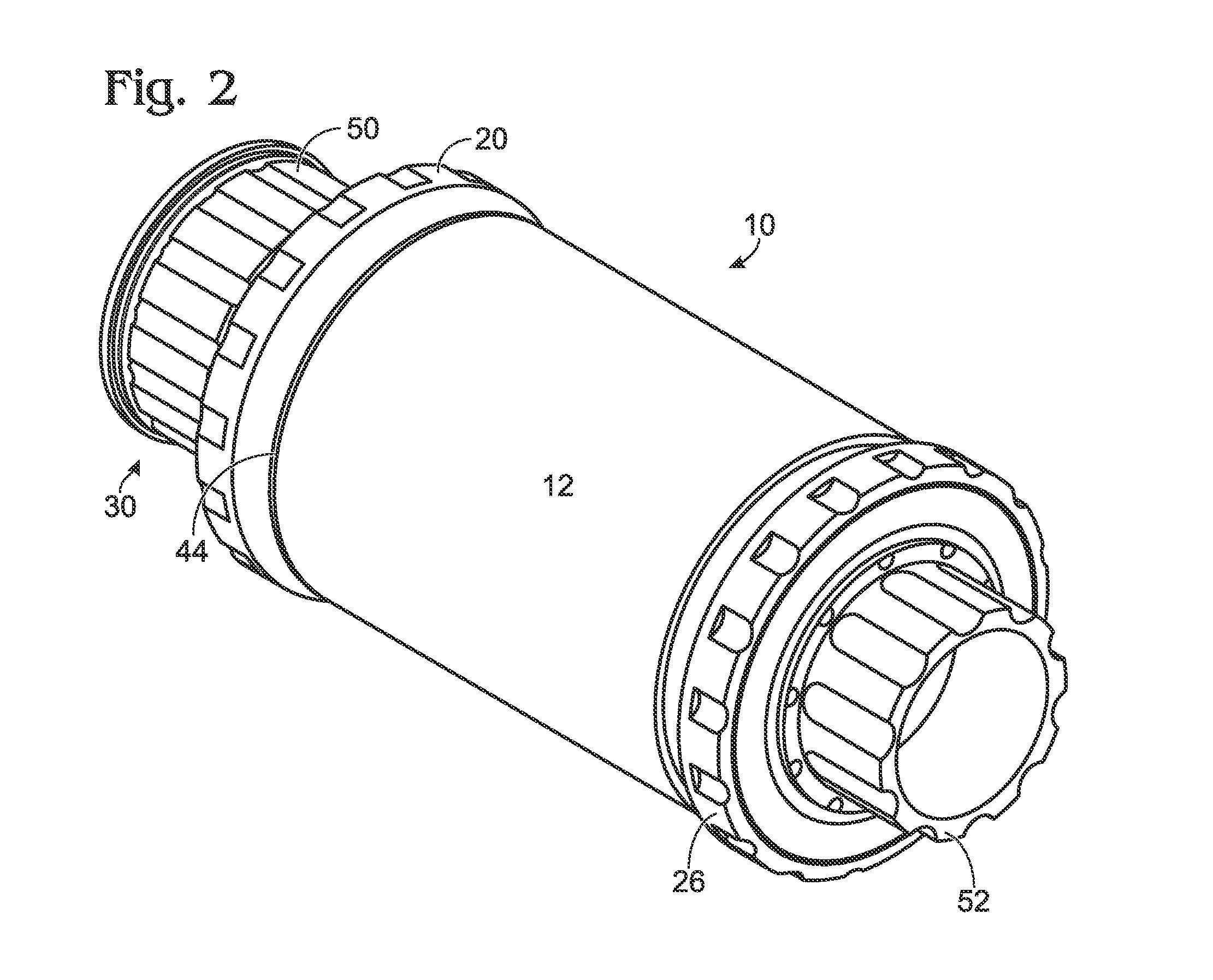Bicycle bottom bracket
- Summary
- Abstract
- Description
- Claims
- Application Information
AI Technical Summary
Benefits of technology
Problems solved by technology
Method used
Image
Examples
Embodiment Construction
[0031]FIG. 1 depicts a first embodiment of a bicycle bottom bracket system, generally indicated at 10. Bottom bracket system 10 includes a bottom bracket shell 12, a left bearing cup generally indicated at 14, and a right bearing cup generally indicated at 16. Shell 12 may be an integrated bottom bracket shell portion of a bicycle frame, or it may be a separate shell which is configured to fit securely within the bottom bracket shell of the bicycle frame, for example by slip fitting, press fitting or the like. For simplicity, shell 12 will be described from this point forward as being an integrated portion of a bicycle frame. However, the other described components of the bottom bracket can also function with an appropriate choice of a separate shell that fits within a bicycle frame.
[0032]Left bearing cup 14 defines a left bearing rotation axis A1, which is the axis passing through the center of the left bearing cup and oriented perpendicular to its end faces. The left bearing cup i...
PUM
 Login to View More
Login to View More Abstract
Description
Claims
Application Information
 Login to View More
Login to View More - R&D
- Intellectual Property
- Life Sciences
- Materials
- Tech Scout
- Unparalleled Data Quality
- Higher Quality Content
- 60% Fewer Hallucinations
Browse by: Latest US Patents, China's latest patents, Technical Efficacy Thesaurus, Application Domain, Technology Topic, Popular Technical Reports.
© 2025 PatSnap. All rights reserved.Legal|Privacy policy|Modern Slavery Act Transparency Statement|Sitemap|About US| Contact US: help@patsnap.com



